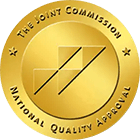By now, most people have heard of fentanyl and understand why this opioid drug is dangerous and problematic for users. Additionally, people are trying to reduce the number of harmful drugs in our towns and cities.
If you aren’t familiar with fentanyl, this article has included a brief overview of the drug and its dangers.
We’ll also go over the fentanyl withdrawal timeline, what you should expect while withdrawing from fentanyl, and how you can get the help you deserve if you are dealing with a fentanyl addiction.
What Is Fentanyl And How Is It Used?
First of all, let’s talk about what fentanyl is and how the drug is used.
Used properly, fentanyl is a potent opioid drug designed to help cover and control even the most severe pain from surgical sites, advanced cancer, and other painful conditions.
However, fentanyl’s intense high, incredible potency, and other features make it a common target for abuse by illicit drug users.
Even when fentanyl is used properly, doctors acknowledge that it can be very difficult to stop using fentanyl once you start. As a result, doctors often work closely with patients to manage withdrawal symptoms and help patients get off fentanyl.
Unfortunately, one of the ways fentanyl is often used on the street means that many of fentanyl’s users may not even know that they’ve been given the drug at first.
That’s because fentanyl is often added to other drugs, especially other opioid medications, to make them stronger. This also allows the dealers to cut the more expensive opioid medications with other substances without their clients realizing that they aren’t getting the drugs they think they are.
The problem only gets worse from there, unfortunately. Because fentanyl can be used to increase the potency of other drugs, it’s relatively common for people buying illicit opioids to wind up with addiction only fentanyl meets.
That means that people might turn into fentanyl users, even if they never intended to use fentanyl and didn’t realize what they were being given.
Risks, Side Effects, And Symptoms Of Fentanyl Use
In addition to the many problems associated with people being given fentanyl without consenting to take the drug or knowing that that is what they are being given, there are a lot of risks associated with fentanyl use.
Many of the risks of fentanyl use are similar but much stronger than those associated with other drugs, especially opioids.
That said, the margin of error with fentanyl is razor-thin. This means the difference between an effective dose for an addict and an overdose is so slim that it’s incredibly easy to overdose accidentally. That added risk is one of the reasons we are seeing a rise in overdose deaths since fentanyl became a more popular drug for dealers and cartels to add to their supply.
Here are some of the most common risks, side effects, and symptoms that come with fentanyl use:
In some cases, fentanyl use may also lead to seizures, blood pressure problems, comas, overdose, and death.
One of the risks of fentanyl use is that common rescue medications, like naloxone, which are designed to reverse an overdose in progress, may not be strong enough to prevent an accidental overdose with a single dose of the rescue medications. EMTs and first responders frequently report needing as many as 3-5 doses of rescue medication to resuscitate fentanyl overdose victims properly. Additional medical attention is often needed to stabilize victims further.
One of the risks of fentanyl use, intentional or unintentional, is that it’s difficult for non-professionals to control the dose of the drug they receive, which means that overdosing on fentanyl is more a matter of when you overdose rather than if you overdose.
Fentanyl Withdrawal Timeline
Knowing what to expect from fentanyl withdrawal can help make it easier to get through the process and make it a lot easier to deal with your symptoms because you’ll know when the symptoms are going to change and stop.
You should expect withdrawal symptoms from fentanyl to start no more than 12 hours after your last dose of fentanyl.
Typically, fentanyl symptoms start with things like muscle cramps or restless legs and move on to sweating, nausea, and vomiting after the first withdrawal phase.
Typical fentanyl withdrawal will last between 5-10 days. However, people with more severe addictions or whose bodies process the drug differently may have different withdrawal timelines.
You can take medications like Tylenol, aspirin, or ibuprofen to help cope with withdrawal symptoms, but other medications, like methadone or antidepressants, will require you to go to a doctor.
Most people experience their worst symptoms of fentanyl withdrawal around 72 hours into the process, with symptoms slowly dissipating from there over the next 3-7 days. Some people may peak earlier, but that’s a good indicator that they may have a shorter than typical withdrawal process.
As you go through the withdrawal process, it is important that your symptoms are temporary and that you will feel better as soon as you get through this part.
How To Get Help
Overcoming fentanyl addiction is no small feat, and it’s important to remember that there are resources that can help make this process a lot easier and help you overcome your addiction as quickly and comfortably as possible.
If you need more support overcoming addiction, there is no shame in admitting that you need and deserve that help.
Residential addiction treatment centers, often called rehab, are one of the best places to overcome fentanyl addiction. Not only are you safe and supported, but you’ll also have access to care designed to help you stay as comfortable as possible. They can also monitor your health and well-being throughout withdrawal and getting back on your feet.
If you think that a residential addiction treatment center might be right for you, contact Achieve Wellness. We’re here to help.
We work with most insurance companies. Please note we are not affiliated with or endorsed by insurance companies.
No Medicaid Accepted.

Medically Reviewed By
Nicole Rettino-Lambert LCSW, LCADC, CCS, CCTP, CSTIP
Nicole Rettino-Lambert is a dually licensed clinician with over 20 years of experience working with children, adolescents, and adults in both addiction treatment and mental health treatment. Along with extensive experience in clinical work, she has held leadership roles in both inpatient and outpatient addiction treatments centers in New Jersey. Throughout her various leadership positions, Rettino-Lambert has developed clinical programming, assisted staff in their growth and development in the clinical field, and had the privilege of helping numerous individuals on their path to recovery.
As a clinician, Rettino-Lambert specializes in addiction trauma, mental health, self-harm behaviors, anxiety, intimacy issues, sex addiction, and personality disorders. She holds certifications as a clinical trauma professional and sex informed professional. Her passion and purpose as a clinician are to help individuals find their voice, purpose, and motivation through their recovery. She takes pride in being part of the process that helps those who are fighting for their lives to achieve both sobriety and wellness.In her role as a Clinical Director at Achieve Wellness and Recovery, Rettino-Lambert works tirelessly to ensure that her staff feels supported in their roles, continues their clinical growth and development, and is empowered to become the best versions of themselves. She firmly believes that all the staff are an essential part of clients’ recovery journey and that they deserve continuous compassion, empathy, acknowledgment, and support from leadership.


















